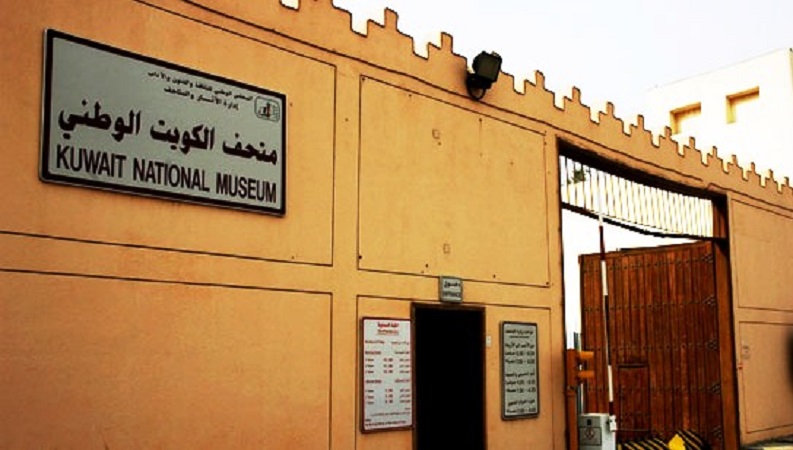Kuwait National Museum
The Kuwait National Museum is a true representation of the Kuwaiti heritage and it is located on the Arabian Gulf Street between the Seif Palace and National Assembly. Designed by French architect Michel Ecochard, visitors can enjoy this historical museum, which represent the Kuwaiti life in the past, their everyday activities, the rich trading history of Kuwait and its traditions.
The museum consists of five buildings built around a central garden; this is similar to the architectural plan of the vernacular Arab mud house which has a central courtyard. The National Museum also exhibits the wonderful art collection by the Al-Sabah dynasty.
Indeed, there are two types of museums while the first displays artifacts found during an archaeological dig in Failika Island, terracotta and engraved tools, wooden doors of the past, group of cutters and blades from Neolithic age and flint stone, silver statues, 16 million old animal fossil, bronze coins from bronze period and Hellenistic period.
The other museum exhibits include statues depicting the old ways of Kuwaitis, old photos dating back to 1942, a typical Kuwaiti house prior to invasion of modern technology and in general, the museum displays artifacts what Kuwait was like during the 40's and 50's. Though, the museum was stripped of several of these artifacts during the Gulf war, it has been restored and is open to public for display. Therefore, for the visitors who are not very familiar with the full chronological and geographic spread of the Islamic world, a visit to Kuwait National Museum will be helpful.
The museum has a remarkable history and it was formerly the residence of the Kuwaiti royal Sabah family. The archaeological discoveries at Failaka created a requirement for a place to house these important finds and the Department of Antiquity and Museums bought the residence of the Sabah family in Kuwait City and turned it into the national museum. Despite the fact that the architectural project and the plans of the museum were ready in 60’s, actual construction was started only in 1981. Two of the four buildings were inaugurated on February 23, 1983; the planetarium was dedicated to the nation on February 16, 1986. One of the four blocks of the museum houses all offices, administrative wings and a lecture hall. The other three blocks houses the permanent artifacts.
Plundered and destroyed by the Iraqi regime during the gulf war, the museum is now renovated and has been re-opened to the public – with most of the previously exhibited artifacts. Though many of the invaluable treasures have been returned to the collection, the national museum authorities report that the whereabouts of another 487 treasures remain unknown. The magnificent trading dhow from the 1930s that graced the front yard of the museum was burned during the gulf war and the replacement for the dhow (replica called as Muhallab II), was constructed on site in 1997 and is now open to visitors.

The first building has 2 rooms displaying very impressive archaeological artifacts found on Failaka Island. Failaka Island is 20km east of Kuwait city in the Persian Gulf.
Apparently, Failaka Island was an important site from as early as the Bronze Age and was colonized by the Ancient Greeks in the fourth century BC. Alexander the Great founded a Greek colony in the island during 324/3 BC and called it 'Ikarus’.
Visitors will see many Bronze Age cauldrons, terracotta pots, coins, flasks and figurines on display from the Hellenistic period, which has been dug up on Failaka. Also they will see tools, vessels and tripods from the Bronze Age in addition to some attractive jewellery- necklaces, bracelets, rings, gem stones. 16 million year old fossils are also displayed along with flint arrows, blades and cutters from the Neolithic age (5000- 8000 BC).



































